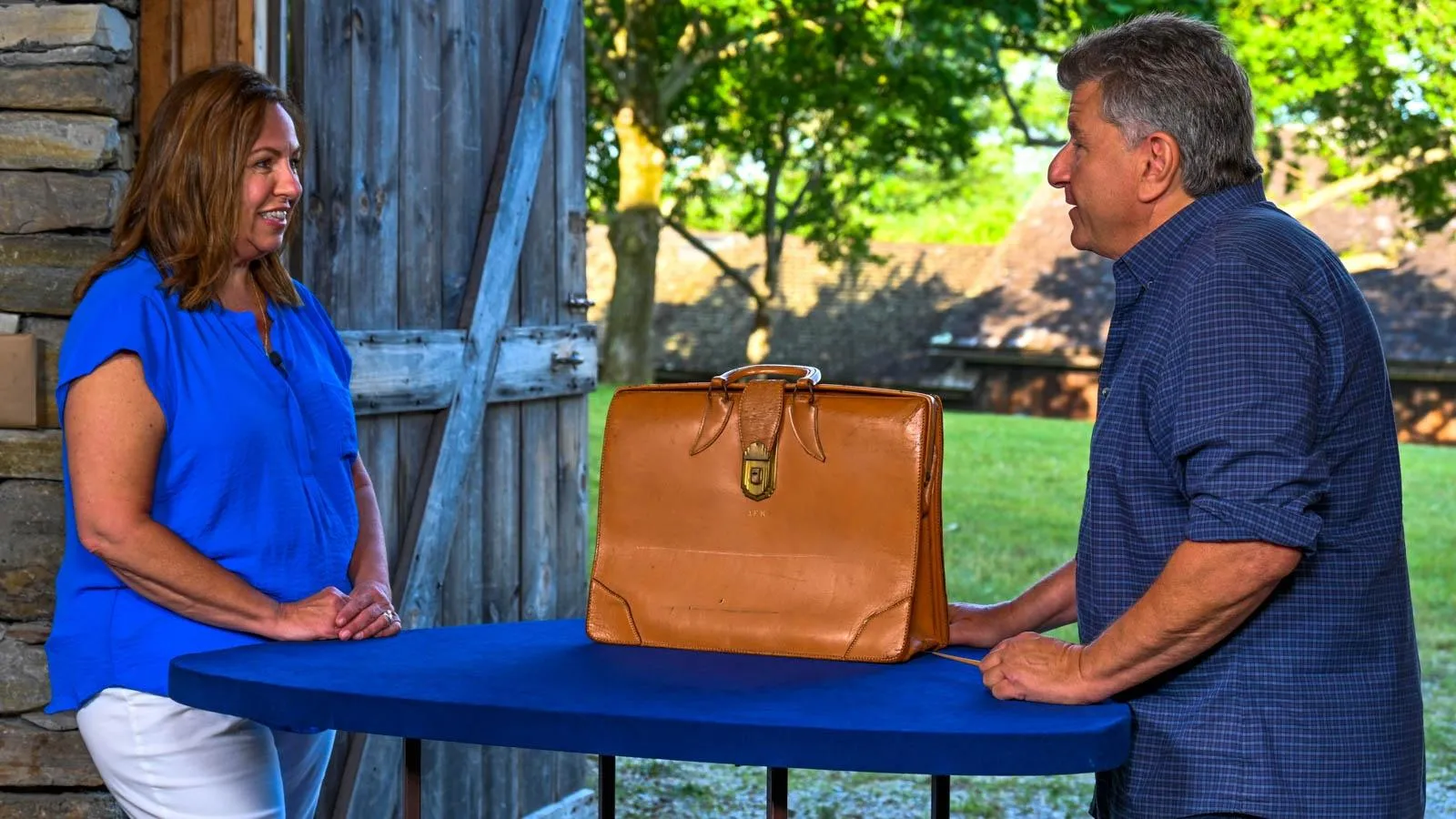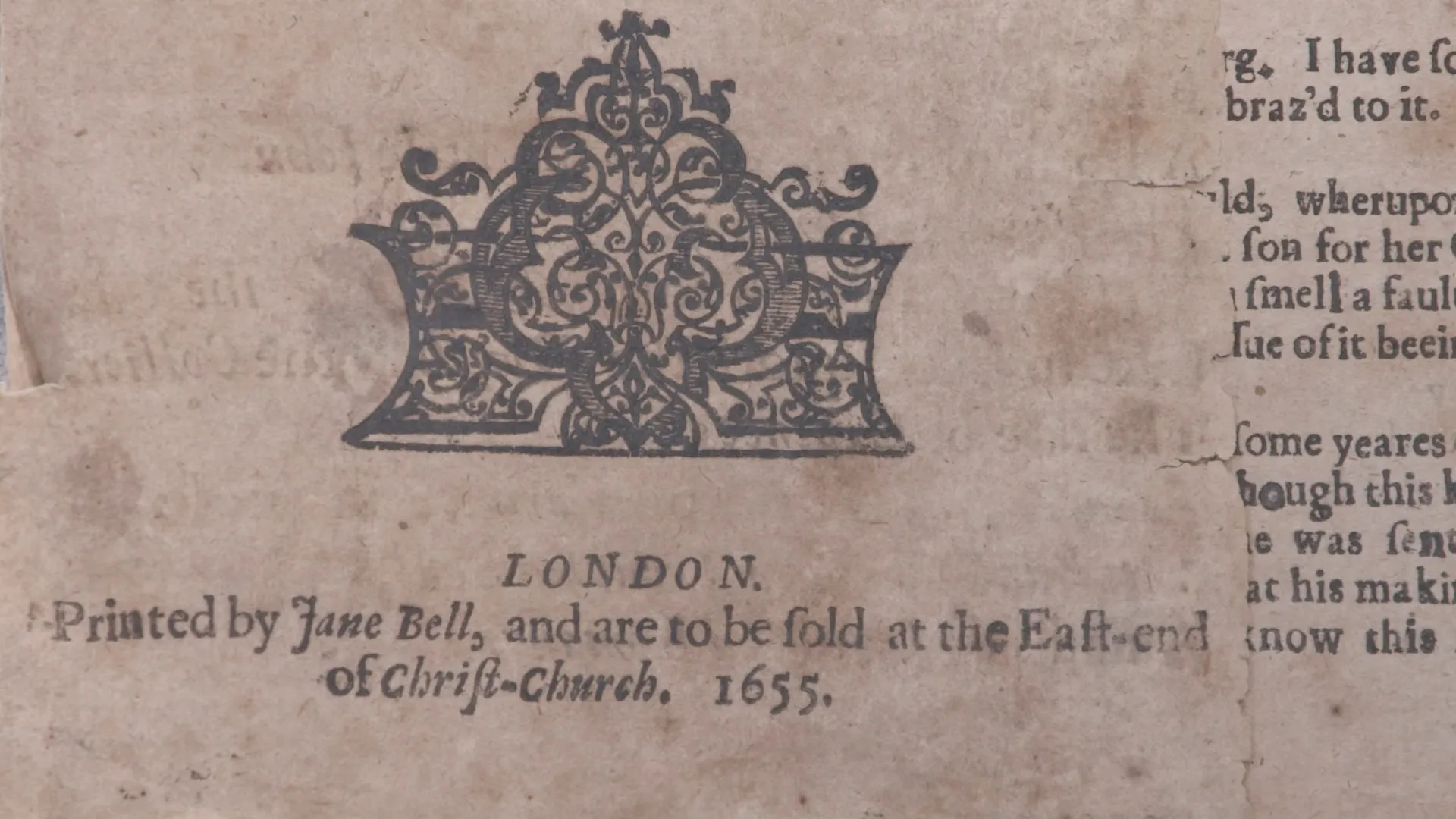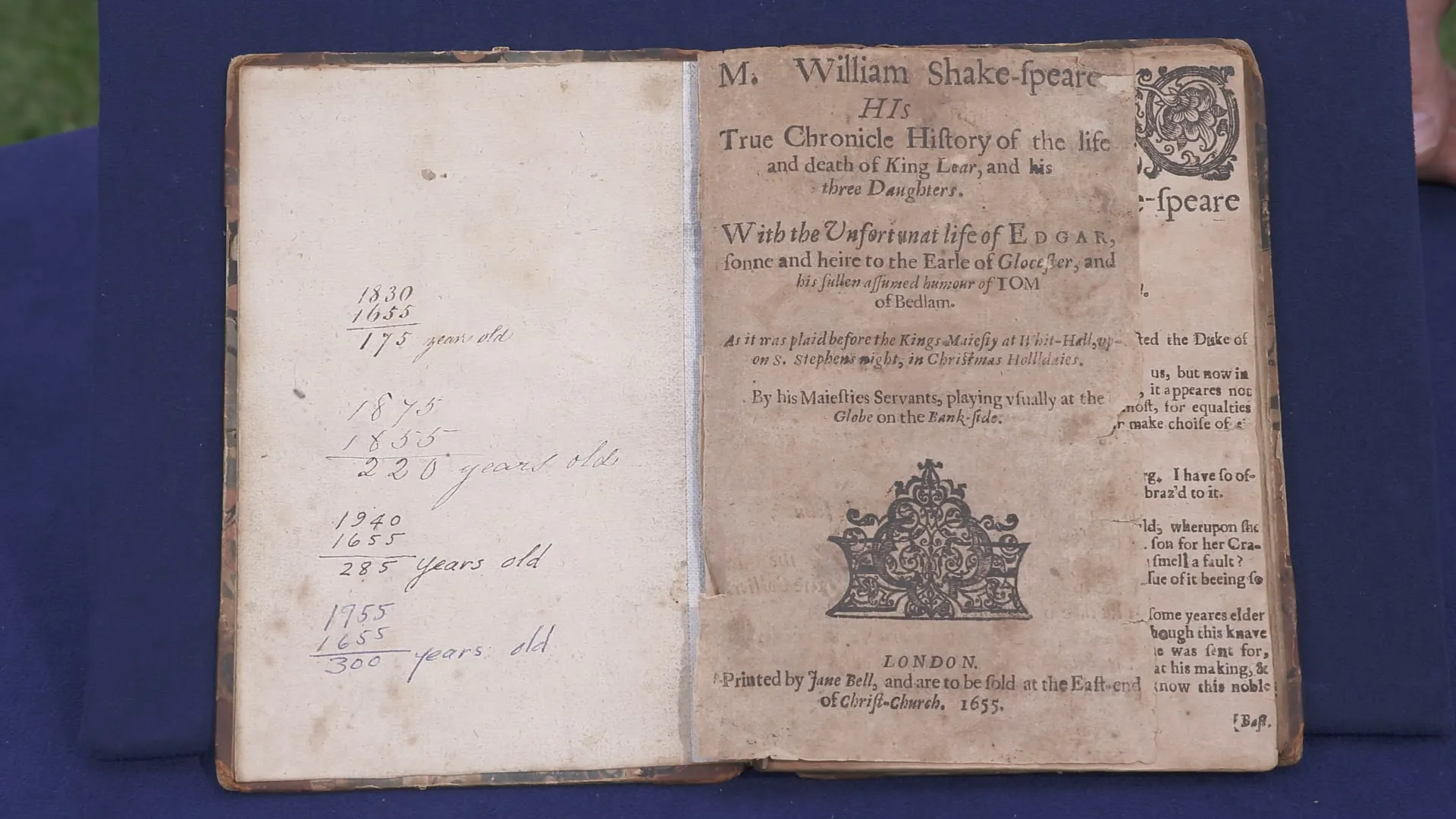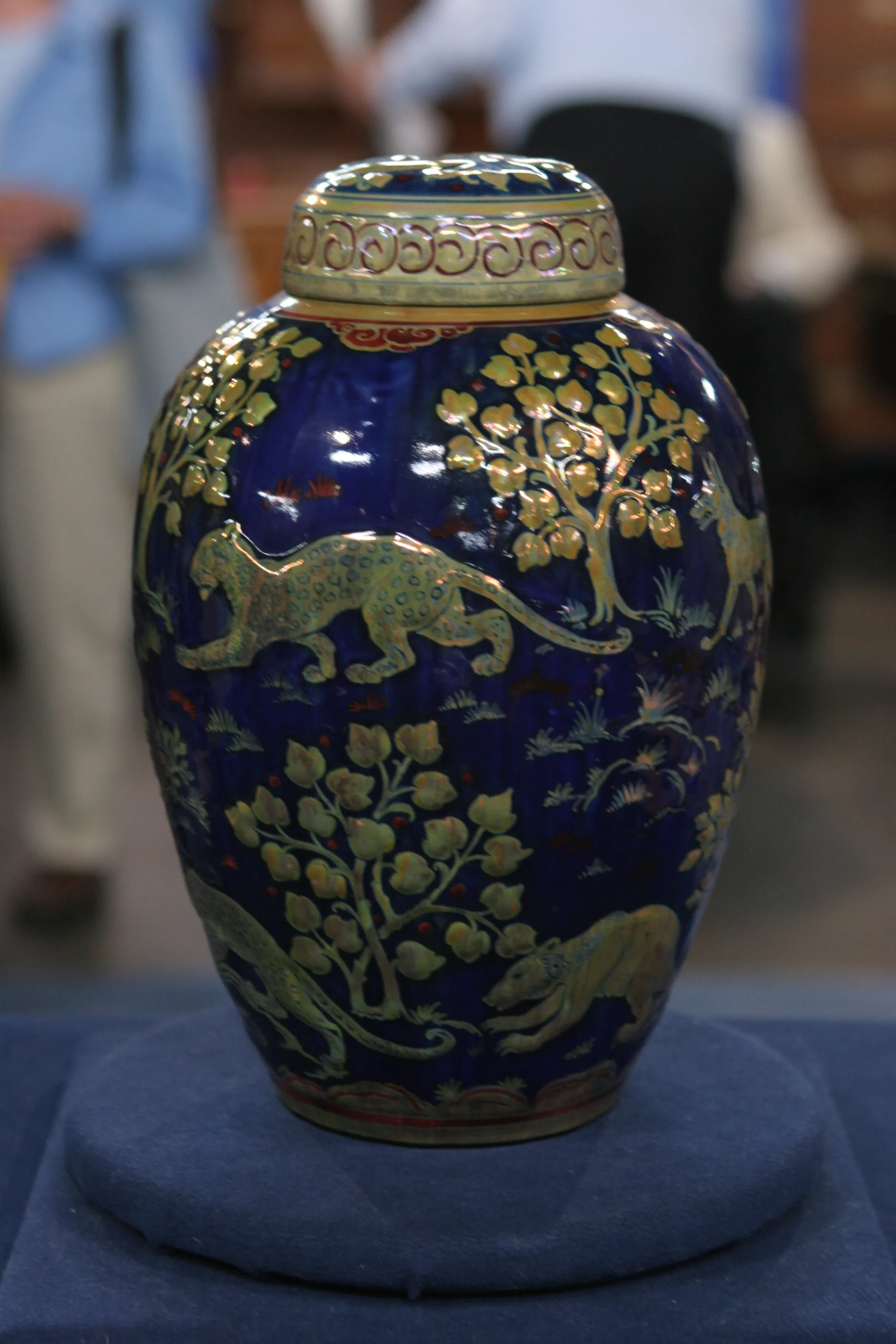GUEST: Well, I brought a book that was part of a collection that my grandfather amassed when he was an architect in Michigan. And it's just been coming down through the family. A very eclectic collection, but this is one that I thought was, was more interesting. It's a, an edition of William Shakespeare's King Lear.
APPRAISER: So what you brought is the third quarto edition of King Lear by William Shakespeare, uh, printed by Jane Bell in 1655.
GUEST: Hm.
APPRAISER: Quarto refers to the way the paper is folded, and it makes a small square book.
GUEST: Oh, okay. Mm-hmm.
APPRAISER: And the quarto plays are sought after by collectors because they were ephemeral and small and cheap, and therefore don't really survive...
GUEST: Mm-hmm. .
APPRAISER: ..but are much more the authentic Shakespearean...
GUEST: Hm.
APPRAISER: ...um, almost like a souvenir that you might buy after seeing a play.
GUEST: Uh-huh.
APPRAISER: There are three quarto editions in the 1600s of King Lear. The first one was printed in 1608.
GUEST: Okay.
APPRAISER: The second one was in 1619. And this is the third.
GUEST: The third, hm.
APPRAISER: This one kind of gets a bad rap. Uh, Jane Bell, kind of a bit of a pirate. Not really sure if she had the right to print it.
GUEST: A-ha.
APPRAISER: It was the widow of a printer named Moses Bell, and she had rights to print something, but maybe not this, and, um...
GUEST: Does that apply to the third printing or the...
APPRAISER: Yes, yeah, her, her printing.
GUEST: Just-- okay.
APPRAISER: Because they did actually have to have rights to print things.
GUEST: Mm-hmm.
APPRAISER: Even though it was the 1600s. But so her text is kind of corrupt. This book doesn't look that great, right? Looks a little brown.
GUEST: Well, it's... Seen some years.
APPRAISER: We had some trouble setting it up...
GUEST: Mm-hmm.
APPRAISER: ...because the front board is detached, and this has a piece of tape on it. So you think, "That looks like a junky book." I noticed there are a lot of numbers over here on the other side-- it looks like people are practicing their math skills. Looks like they're trying to figure out how old the book is at different points, which is kind of interesting. This is actually a later binding. This is not the original binding...
GUEST: Oh, really?
APPRAISER: ...from 1655. So it doesn't affect the value because a collector would have this book resewn and rebound in a more period-appropriate binding. When I was looking it up, I found that the last copy of the 1655 Jane Bell quarto King Lear, as you have here, that sold at auction sold in 1946.
GUEST: Really?
APPRAISER: And nothing since.
GUEST: Wow.
APPRAISER: Nothing since. And before that, there was a dealer's catalogue, maybe from the '20s, nothing else.
GUEST: Hm.
APPRAISER: So then I looked it up in a bibliography to see how many copies there are in libraries, and there are only ten copies in the U.S.
GUEST: Really?
APPRAISER: And seven in England, which is also really rare.
GUEST: Wow.
APPRAISER: Shakespeare collectors are really serious. Collectors of English literature are really serious. They don't mind a little condition problems when it comes to Mr. S., you know?
GUEST: Mm-hmm.
APPRAISER: Know what I mean? Um, it's an amazing book. It's, it's a great find, and it's hard to establish, obviously, if you have a book that hasn't been sold since 1946.
GUEST: Yes.
APPRAISER: We often rely on auction records...
GUEST: Mm-hmm.
APPRAISER: ...to look for comparable copies to figure it out. This book is complete. I went through and checked all the pages, so it's all there.
GUEST: Mm-hmm.
APPRAISER: At auction, I would conservatively say $10,000 to $15,000.
GUEST: Really?
APPRAISER: Yes.
GUEST: Wow.
APPRAISER: For this dirty little book.
GUEST: Well, I knew it was unusual, but I had no idea.










